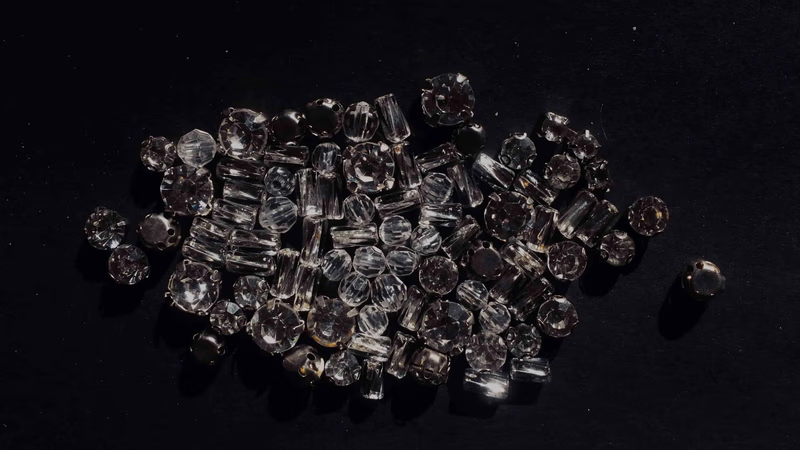
Darya-i-Noor: A stunning pink diamond from Iran"s treasures. "
There is limited information available regarding the specific details of large diamonds held in the treasuries of West Asian countries, central banks, or private collections. The diamond market is often private and discreet, making it challenging to obtain accurate and up-to-date information on individual diamond holdings. There have been notable diamonds associated with West Asian countries in the past. For example, the "Hope Diamond," one of the world's most famous diamonds, was once owned by several prominent figures, including King Louis XIV of France. It was later acquired by an American jeweler and eventually donated to the Smithsonian Institution in the United States. While the Hope Diamond is not currently located in a West Asian country, it demonstrates the historical connection between prominent diamonds and international collectors. Iran has a storied history with precious gemstones, particularly diamonds, many of which are part of the Iranian Crown Jewels.
- Darya-i-Noor (Sea of Light):
Weight: Approximately 182 carats.
Color: Pale pink.
Origin: India.
Current Location: Central Bank of Iran, Tehran. One of the largest and most famous diamonds in the world, the Darya-i-Noor is part of the Iranian Crown Jewels and is displayed in the Treasury of National Jewels in Tehran. It is believed to have been part of the Great Mogul Diamond. - Noor-ul-Ain:
Weight: Approximately 60 carats.
Color: Pink.
Current Location: Central Bank of Iran, Tehran. This diamond is mounted in a tiara that was designed for the Empress of Iran, Farah Pahlavi, for her wedding to Shah Mohammad Reza Pahlavi. - Taj-i-Mah (Crown of the Moon):
Weight: Approximately 115 carats.
Color: White.
Current Location: Central Bank of Iran, Tehran. Another significant diamond in the Iranian Crown Jewels, contributing to the collection's reputation for housing some of the most exquisite gems in the world.
Saudi Arabia, known for its immense wealth due to oil reserves, also has notable diamond collections, though specific information about individual large diamonds is less publicly detailed compared to Iran. Saudi Arabia's royal family and wealthy private collectors are known to possess significant gemstone collections, including large diamonds. However, detailed public information about specific large diamonds is scarce, reflecting the private nature of these holdings. The UAE, particularly Dubai, has become a global hub for luxury goods, including diamonds.
It's important to note that the diamond market is dynamic, and ownership of large diamonds can change over time through sales, auctions, or private transactions. Additionally, some countries or collectors may choose to keep their diamond holdings undisclosed for security or privacy reasons.The diamond of Daraye Nour is one of the largest diamonds in the world as a part of the treasures of the National Country. This diamond is unique to a person with a peach-pink color and a weight of 182 carats. The rare diamond is now in the Museum of jewelry nation of Iran and to the support of the economy of Iran is known. In addition to Daraye Nour, the treasures of another also in the museum store will be the reserves of diamonds in Iran. For example,
- King Crown made up of gold and silver adorned with a jeweled of diamonds, pearls, rubies, sapphires, and coarse emeralds
- Taj Kiani from the Qajar kings with the gems of the diamonds, emeralds, rubies, and pearls
- Naderi Paisley that has a giant stone emerald in the center and several fine and coarse diamond.
Dubai’s role as a major diamond trading center means that many large and valuable diamonds pass through or are held by private collectors and dealers in the UAE. Specific notable diamonds in government or central bank collections are not widely publicized. Kuwait, Qatar, and Bahrain also have significant wealth and private collections of jewels, but like Saudi Arabia and the UAE, specific information about large diamonds in their treasuries or central banks is not widely disclosed.
Countries like the UAE, particularly Dubai, and Bahrain have established themselves as important centers for diamond trade, hosting numerous auctions and private sales where large diamonds may be bought and sold. Many of the largest diamonds in West Asian countries are held in private collections or treasuries with a high emphasis on privacy and security, making detailed public information less accessible.While Iran stands out with its well-documented and historically significant collection of large diamonds within its Crown Jewels, other West Asian countries likely possess significant diamonds, primarily in private collections, with less public information available.
-
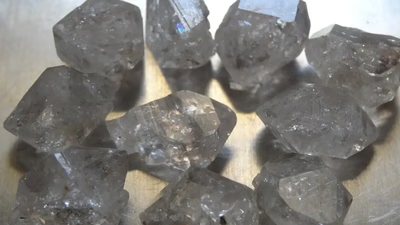
The leading diamond-producing countries are Russia, Botswana, and Canada, with significant contributions from South Africa, Angola, and Namibia. Russia dominates the market with its diamond mining concentrated in the Sakha Republic, primarily managed by Alrosa. Botswana"s diamond industry is largely driven by the Debswana Diamond Company, a collaboration between the government and De Beers. Canada has become a notable player in recent years, with major operations in the Northwest Territories led by Dominion Diamond Mines. These nations possess substantial diamond reserves and established mining sectors that influence global trade dynamics. The article also highlights the historical context of diamonds as valuable commodities and their role in jewelry markets worldwide. While Africa remains a key region for diamond extraction, issues such as low wages and discrimination among local workers persist. The quality of diamonds varies across regions, with Canadian diamonds recognized for ethical practices and high standards.
Australia was once a major contributor through its Argyle mine but has seen production decline since its closure in 2020. "
-
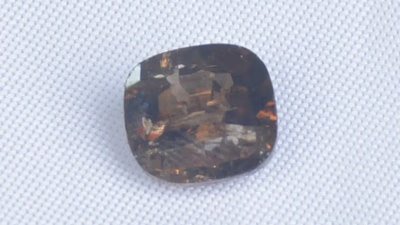
No significant diamond mines have been discovered in West Asia, particularly in the Middle East, due to unfavorable geological conditions. The region lacks the necessary formations for diamond deposits, which are typically found in areas like Africa and Russia. Recent findings of diamond particles in Iran"s Sistan and Baluchestan province have sparked interest, but experts remain skeptical about the potential for large-scale mining operations. While some believe there may be undiscovered reserves due to geological similarities with neighboring Afghanistan, extensive exploration has yet to occur. The UAE has emerged as a key player in the diamond trade, focusing on trading and retail rather than mining. Despite the absence of local mines, the global diamond market remains economically significant, with diamonds valued higher than other gemstones and precious metals. "
-
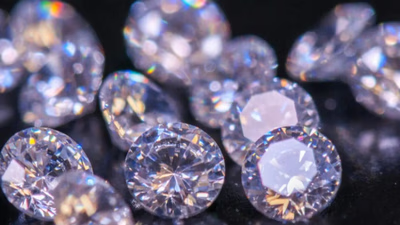
The United States leads global diamond consumption, with major retail hubs in cities like New York and Los Angeles. While it has some cutting and polishing facilities, the U. S. primarily relies on imports for its diamond supply. India stands out as the largest diamond cutting and polishing center, with significant domestic demand driven by a growing middle class. The United Arab Emirates, particularly Dubai, has emerged as a key player in the diamond trade due to its strategic location and business-friendly environment. Major diamond-producing countries include the Netherlands, Russia, America, India, and Belgium, with Belgium recognized for its high-quality cuts and extensive trading network. Antwerp is noted as the global diamond trading capital, facilitating international transactions.
Other notable markets include China, where rising disposable incomes are increasing demand for luxury goods like diamonds. Despite a downturn in market conditions affecting countries like Iran, which has seen a decline in its consumption ranking, the overall landscape of diamond trade remains dynamic across regions.
-

The diamond market in West Asia is characterized by limited public information regarding large diamonds held by central banks and private collectors. Notable diamonds like the Darya-i-Noor, Noor-ul-Ain, and Taj-i-Mah are part of Iran"s Crown Jewels, showcasing the country"s rich history with precious gemstones. The Darya-i-Noor, weighing approximately 182 carats and known for its pale pink color, is displayed in Tehran"s Treasury of National Jewels. Saudi Arabia and the UAE also possess significant diamond collections, although specific details about individual diamonds remain scarce due to privacy concerns. Dubai has emerged as a global hub for luxury goods, including diamonds, facilitating numerous auctions and private sales. Other countries in the region, such as Kuwait and Qatar, likely have valuable collections but lack publicly available information. The dynamic nature of the diamond market means ownership can change frequently through sales or private transactions. Overall, while Iran"s collection is well-documented, other West Asian nations maintain a level of secrecy regarding their diamond holdings.
-
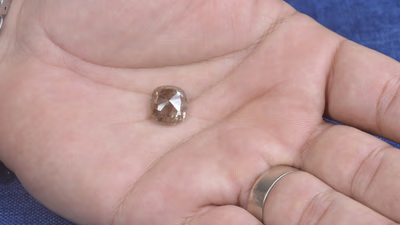
The diamond trade is evolving due to shifting consumer preferences, particularly among younger generations who prioritize sustainability and ethical sourcing. This trend is driving demand for lab-grown diamonds and customizable jewelry. Technological advancements in diamond synthesis are expected to further influence market dynamics, as lab-grown diamonds become more prevalent. Additionally, the importance of traceability and ethical practices in the supply chain is increasing, reflecting consumer concerns about the environmental impact of mining. Economic factors and geopolitical changes also play a significant role in the diamond economy, with fluctuations in global conditions affecting demand and prices. Iran"s potential for diamond exploration, particularly in ophiolite belts, could reshape its position in the market. The rise of emerging markets like China and India is contributing to increased luxury goods consumption, including diamonds. E-commerce is transforming retail within the industry, providing consumers with convenient access to diamonds online.
As these trends continue to develop, they will shape the future landscape of the diamond trade. "





